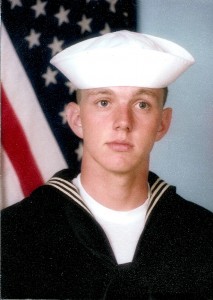By Joseph Baxter
Retired Chief Petty Officer in United States Navy
A century ago, in a place many people would find challenging to identify on a map, the presumptive heir to the throne of a fading empire died at the hands of an assassin. Within a month, one country had declared war upon another. Obliged by a tangle of treaties, many other nations and empires were pulled into the conflict. The world would never be the same. The youngish United States would, after several years of careful neutrality, be reluctantly drawn into what we know today as World War I. By 1918, America had sent to the battlefields in France over a million Soldiers and Marines in the American Expeditionary Force. Of those men, more than 50,000 did not come home.
However, the vast majority of these men, most in the flower of their youth, did come home. Fully a quarter of them brought back wounds and scars – some exceedingly grave. All were changed by what they had experienced in the trenches and mud of The Great War, as it was known then. The devastation wrought upon Europe, upon its peoples, and most appallingly, upon the men who fought it, was overwhelming. This was to be “The War to End All Wars” and it was inconceivable that such a wasteful and barbaric conflict could happen again.
The fighting ended in WWI on the 11th hour of the 11th day of the 11th month in 1918 with the signing of an armistice among the warring nations. A year later, as our troops were returning home, President Wilson issued a proclamation setting aside November 11th as “Armistice Day” to honor the heroism of those who died in service to the nation. It was to be a day of parades and public gatherings, an opportunity to show the flag, and to show gratitude for our victory over tyranny.
In the decades that followed, America fought another equally brutal and bloody World War, and then against the scourge of Communism in Korea. These wars resulted in almost a half-million more Americans laying down their lives and added nearly 20 million more veterans to the rolls -- all in the defense of our freedoms. At the urging of our veterans service organizations, President Eisenhower signed legislation in 1954 changing Armistice Day to Veterans Day so as to better honor the service of all those who served their nation.
Today, nearly 100 years after that first Armistice Day, we honor the service and great sacrifice of those men and women who have served with honor and great courage in all our wars: WWI, WWII, Korea, Vietnam, Iraq, Afghanistan, and all the “little wars” that were anything but little to those who fought in them.
It is said, in that uniquely American way, that a young man or woman who enlists signs a blank check to the nation, drawn upon their life, which the nation may present for payment at any time they wear the uniform. That is no small thing. It is humbling and a testament to their mettle that so many reenlist in a combat zone or while wearing the Purple Heart.
This Veterans Day, we should take just a couple of minutes, perhaps at the 11th hour in the tradition of Armistice Day, to quietly reflect upon the courage and sacrifice of those who have gone before us and of those who are returning from the battlefield today. They did not choose the time or the place where they fought. They accepted the risk to life and limb with honor, courage, and commitment. The greatest thing that you may do is to honor their sacrifice. Put up the flag. Go to a parade and cheer the old ones as they pass. Their numbers grow smaller each year. Remember also those from earlier wars; our last living vet from WWI passed on to glory last year.
You might also consider lending support to one of the many veterans’ service organizations. These organizations provide invaluable service and support for veterans and their families. There are many such organizations, from the venerable VFW and American Legion, to the ones born of the wars in Iraq and Afghanistan such as The Wounded Warrior Project or The Gary Sinise Foundation.
However, of all these things the most important of all is the easiest, takes only a moment, and means more than just about anything you can do: When you encounter a veteran simply say “Thank you for your service.”
Joseph Baxter served in the U.S. Navy for nearly 25 years, retiring as a Chief Petty Officer in 2008

